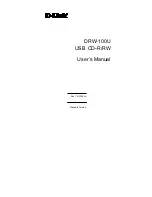
14
Unidrive M Modular Installation Guide
Issue Number: 2
Table 3-5 Unidrive M Rectifier ratings
3.1.1 Typical short term overload limits
The maximum percentage overload limit changes depending on the selected motor. Variations in motor rated current, motor power factor and motor
leakage inductance all result in changes in the maximum possible overload. The exact value for a specific motor can be calculated using the
equations detailed in Menu 4 in the
Parameter Reference Guide
.
Typical values are shown in the table below for RFC (RFC-A or RFC-S) and open loop (OL) modes:
Table 3-6 Typical overload limits
Generally the drive rated current is higher than the matching motor rated current allowing a higher level of overload than the default setting.
The time allowed in the overload region is proportionally reduced at very low output frequency on some drive ratings.
The maximum overload level which can be attained is independent of the speed.
3.2 Operating modes
The drive is designed to operate in any of the following modes:
1.
Open loop mode
Open loop vector mode
Fixed V/F mode (V/Hz)
Quadratic V/F mode (V/Hz)
2. RFC - A
With position feedback sensor
Without position feedback sensor (Sensorless)
3. RFC - S
With position feedback sensor
Without position feedback sensor (Sensorless)
3.2.1 Open loop mode
The drive applies power to the motor at frequencies varied by the user.
The motor speed is a result of the output frequency of the drive and slip
due to the mechanical load. The drive can improve the speed control of
the motor by applying slip compensation. The performance at low speed
depends on whether V/F mode or open loop vector mode is selected.
Open loop vector mode
The voltage applied to the motor is directly proportional to the frequency
except at low speed where the drive uses motor parameters to apply the
correct voltage to keep the flux constant under varying load conditions.
Typically 100 % torque is available down to 1 Hz for a 50 Hz motor.
Fixed V/F mode
The voltage applied to the motor is directly proportional to the frequency
except at low speed where a voltage boost is provided which is set by
the user. This mode can be used for multi-motor applications.
Typically 100 % torque is available down to 4 Hz for a 50 Hz motor.
Quadratic V/F mode
The voltage applied to the motor is directly proportional to the square of
the frequency except at low speed where a voltage boost is provided
which is set by the user. This mode can be used for running fan or pump
applications with quadratic load characteristics or for multi-motor
applications. This mode is not suitable for applications requiring a high
starting torque.
3.2.2 RFC-A mode
R
otor
F
lux
C
ontrol for Asynchronous (induction) motors (
RFC-A
)
encompasses closed loop vector control with a position feedback device
With position feedback
For use with induction motors with a feedback device installed. The drive
directly controls the speed of the motor using the feedback device to
ensure the rotor speed exactly as demanded. Motor flux is accurately
controlled at all times to provide full torque all the way down to zero
speed.
Without position feedback (Sensorless)
Sensorless mode provides closed loop control without the need for
position feedback by using current, voltages and key motor parameters
to estimate the motor speed. It can eliminate instability traditionally
associated with open loop control such as operating large motors with
light loads at low frequencies.
3.2.3 RFC- S
R
otor
F
lux
C
ontrol for Synchronous (permanent magnet brushless)
motors (
RFC-S
) provides closed loop control with position feedback
device.
With position feedback
For use with permanent magnet brushless motors with a feedback
device installed.
The drive directly controls the speed of the motor using the feedback
device to ensure the rotor speed is exactly as demanded. Flux control is
not required because the motor is self excited by the permanent
magnets which form part of the rotor.
Absolute position information is required from the feedback device to
ensure the output voltage is accurately matched to the back EMF of the
motor. Full torque is available all the way down to zero speed.
Model
Voltage
rating
Maximum AC input
current
Typical continuous DC output
current
Maximum DC output
current
V
A
A
A
10204100
200
361
409
413
10404520
400
396
452
455
10502430
575
218
243
246
10602480
690
225
247
251
Operating mode
RFC from cold
RFC from 100 %
Open loop from cold
Open loop from 100 %
Normal Duty overload with motor rated current = drive rated current
110 % for 165 s
110 % for 9 s
110 % for 165 s
110 % for 9 s
Heavy Duty overload with motor rated current = drive rated current (size 9
and 10)
170 % for 42 s
170 % for 5 s
150 % for 60 s
150 % for 7 s
NOTE
Summary of Contents for 09201760D
Page 92: ...0478 0141 02...















































